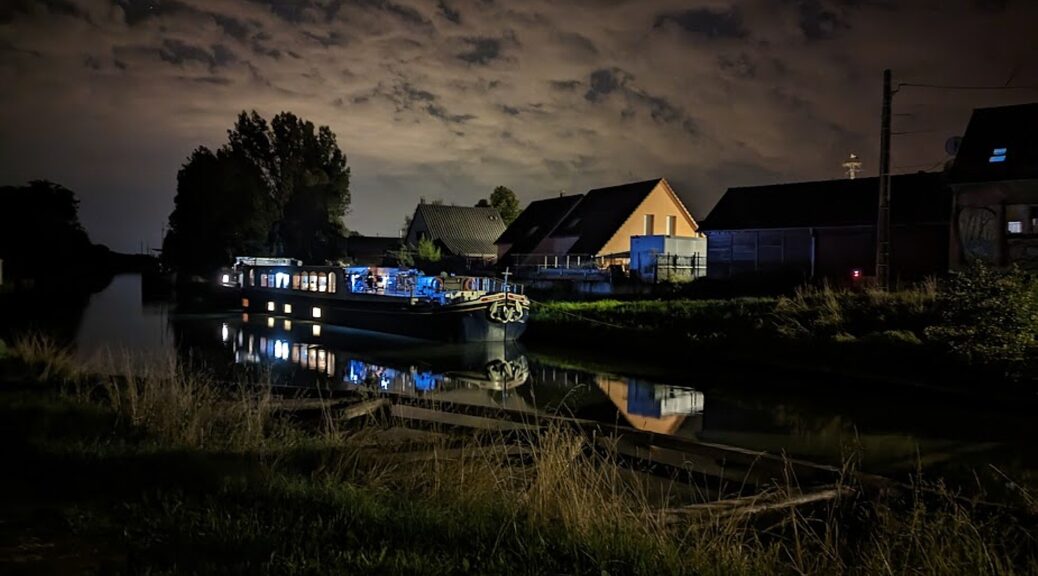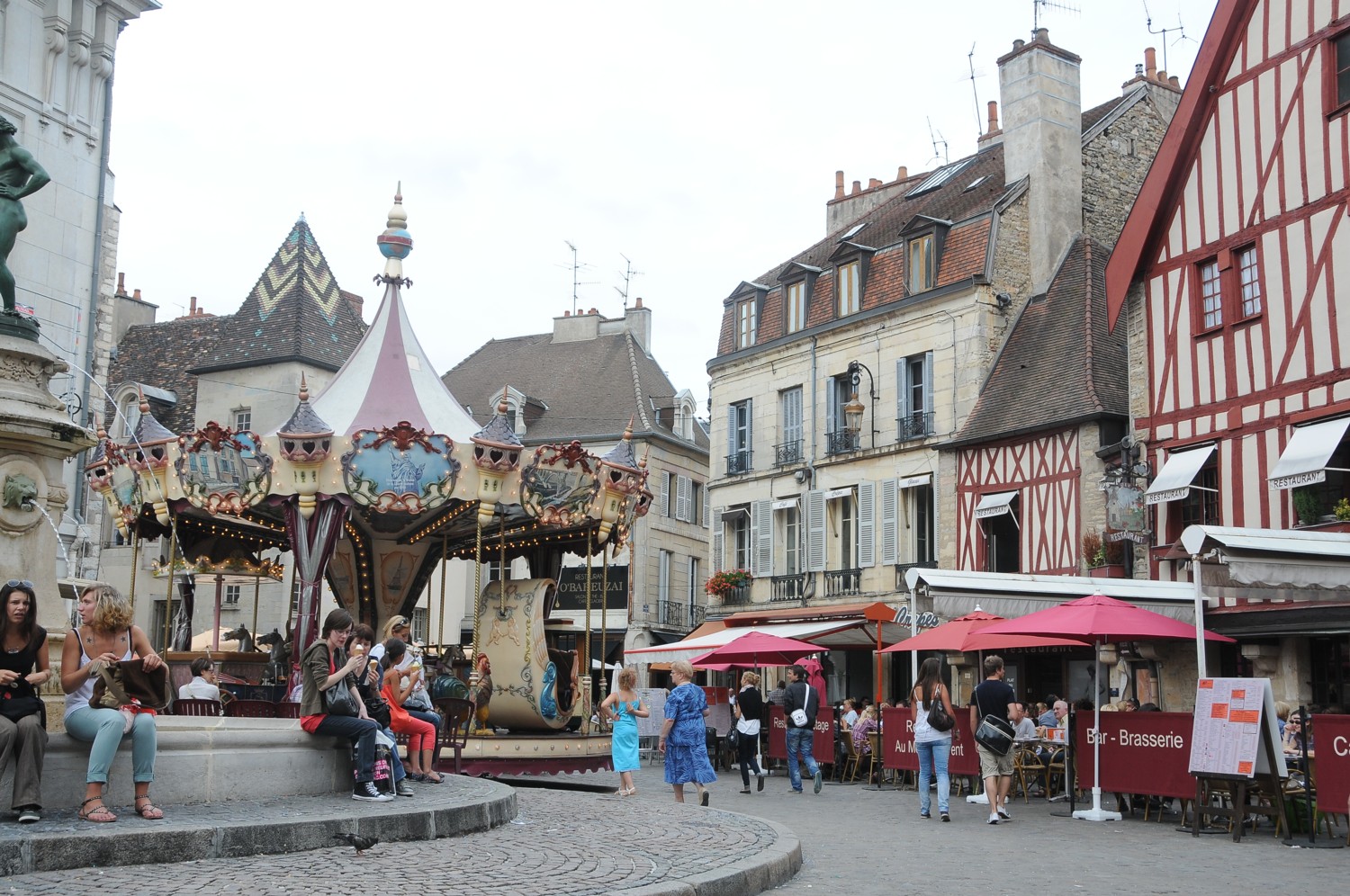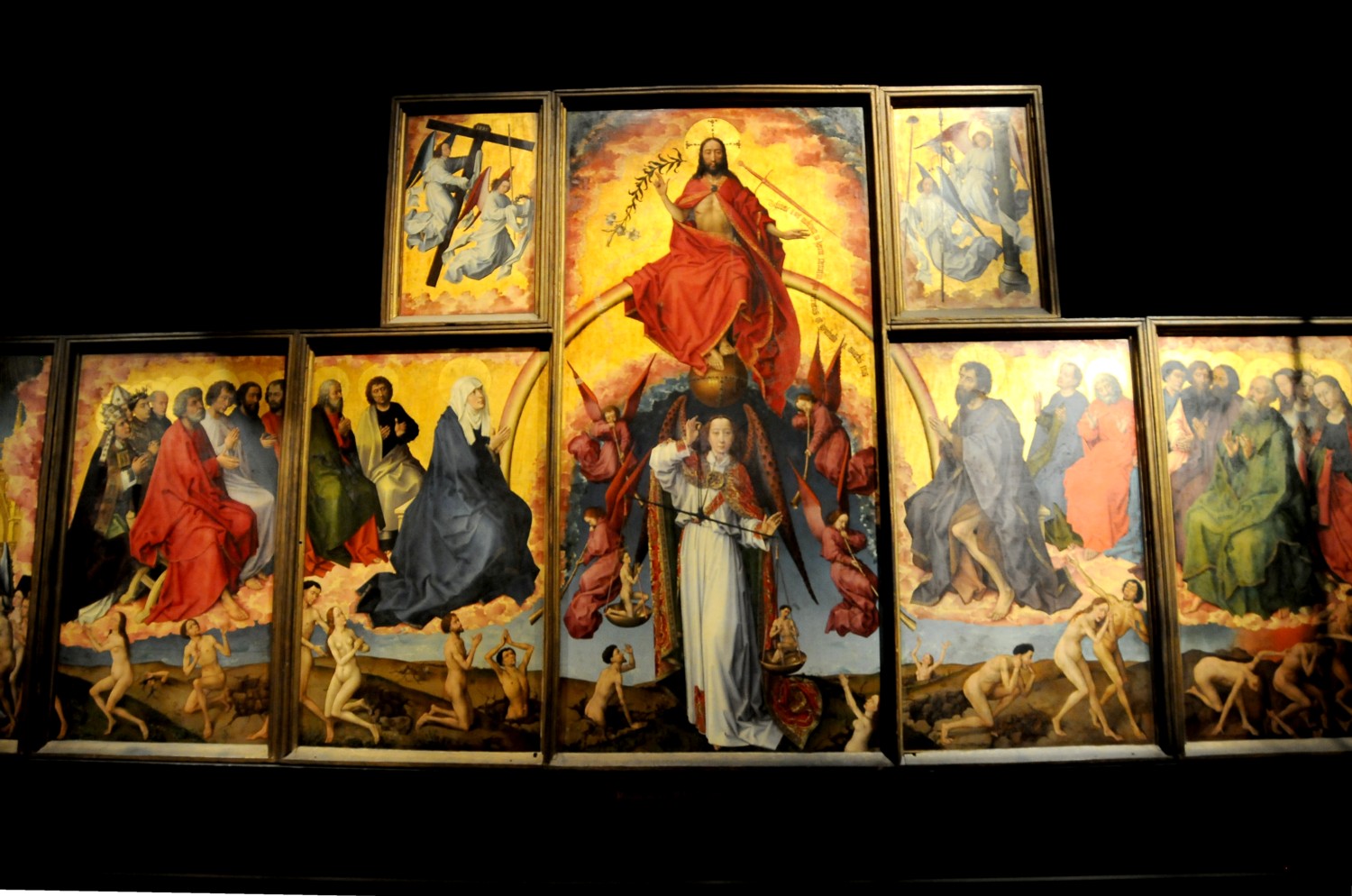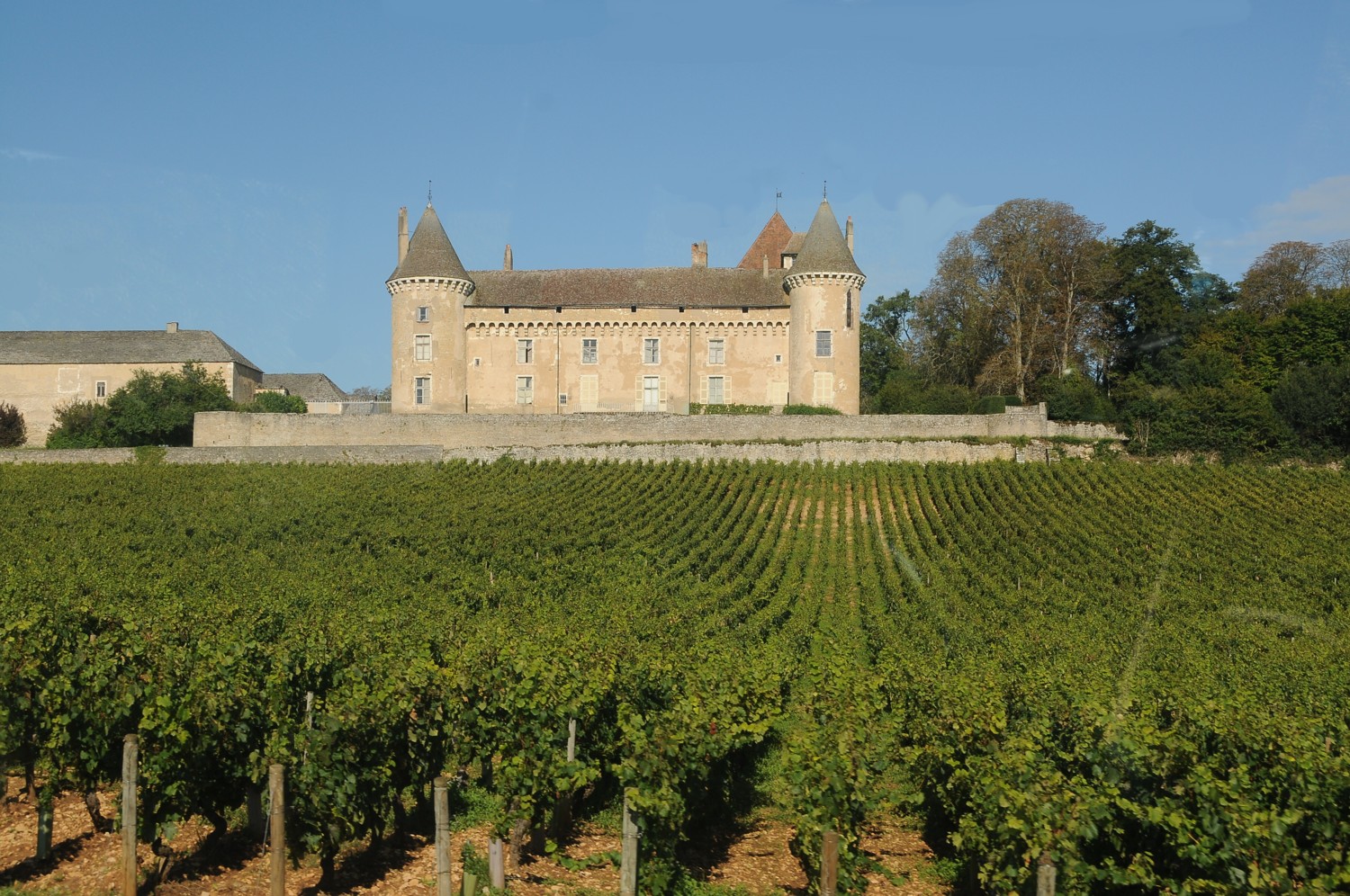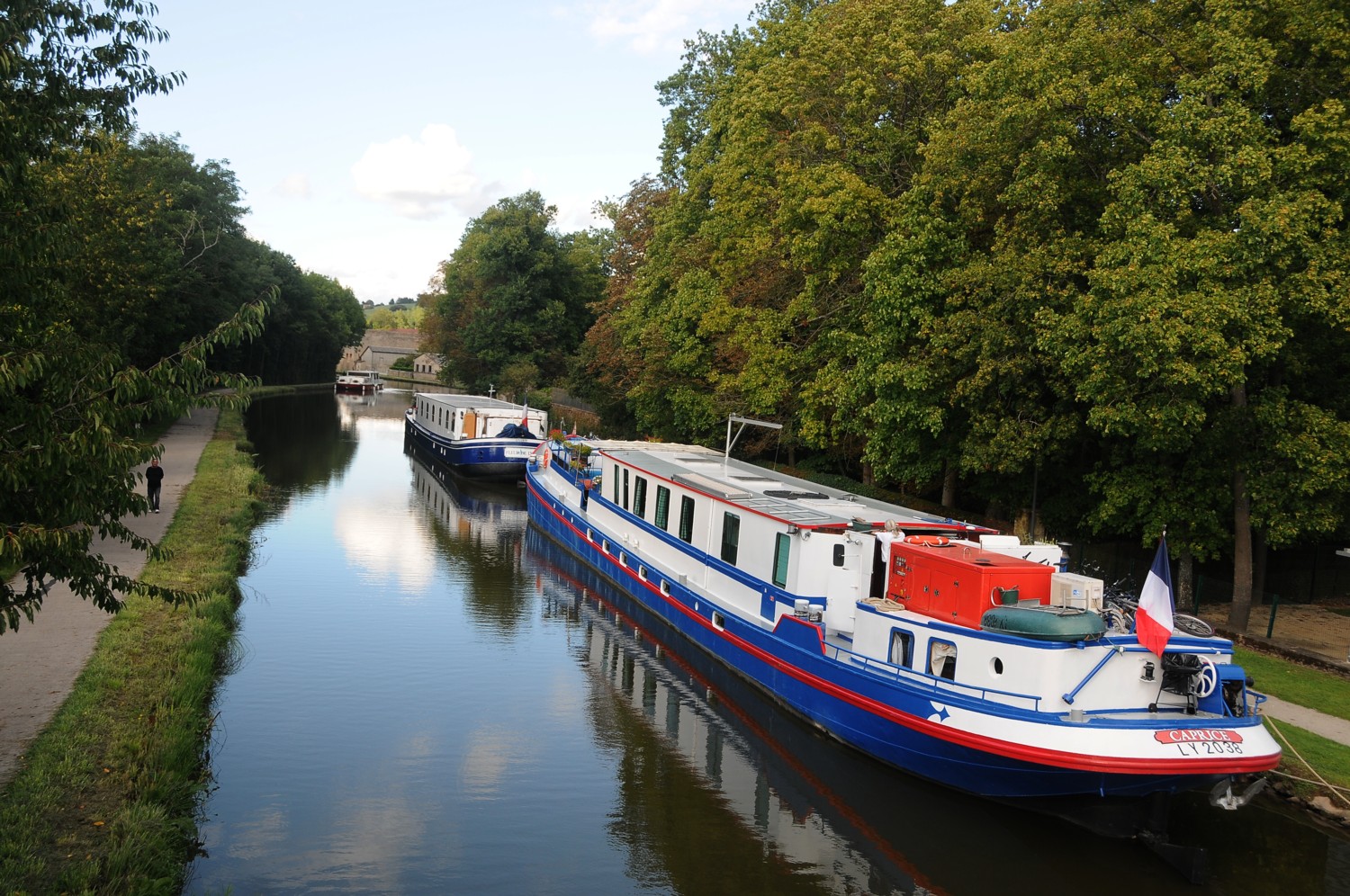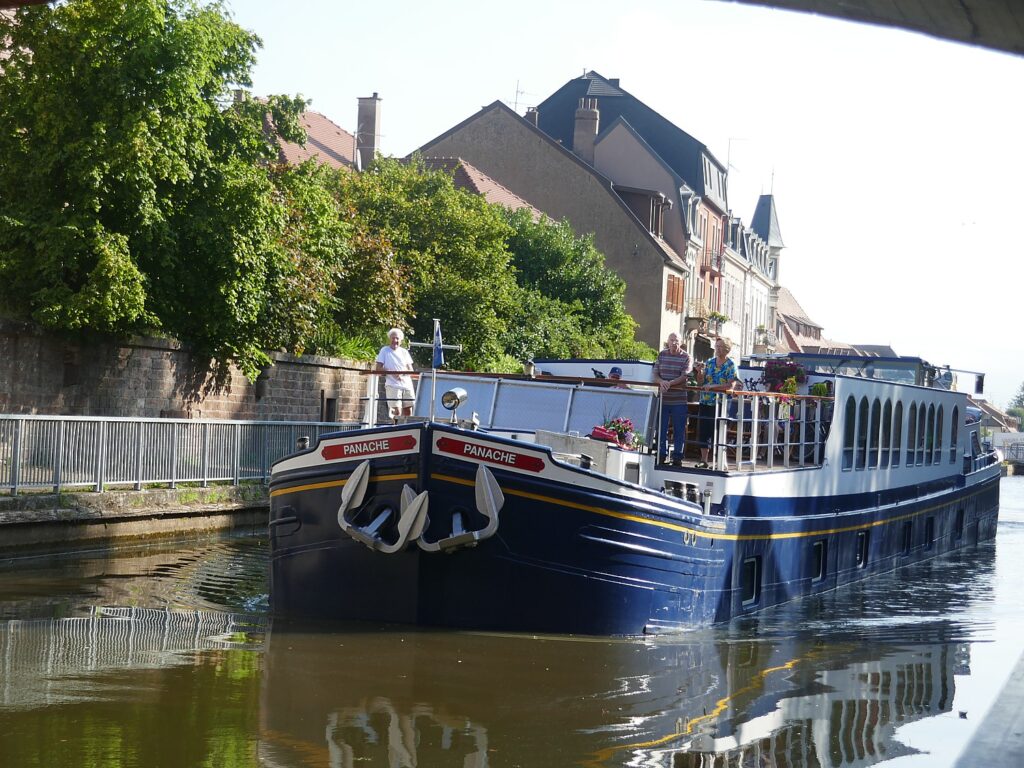
By Karen Rubin, Travel Features Syndicate, goingplacesfarandnear.com
Reflecting back, it is so interesting that a trip that is so absolutely relaxing can also be filled with activity, interesting, even astonishing, attractions, scenic sights, and cuisine that is Michelin-star caliber, and how, traveling slower than 3 mph, you can see so much, experience so much in a day.
This is European Waterways’ six-night/seven-day Marne-Rhin Canal cruise through France’s Alsace & Lorraine Region, aboard its hotel barge, Panache. The boat sleeps 12 and has a crew of six, so pampering is an understatement – this is like a floating luxury boutique hotel.
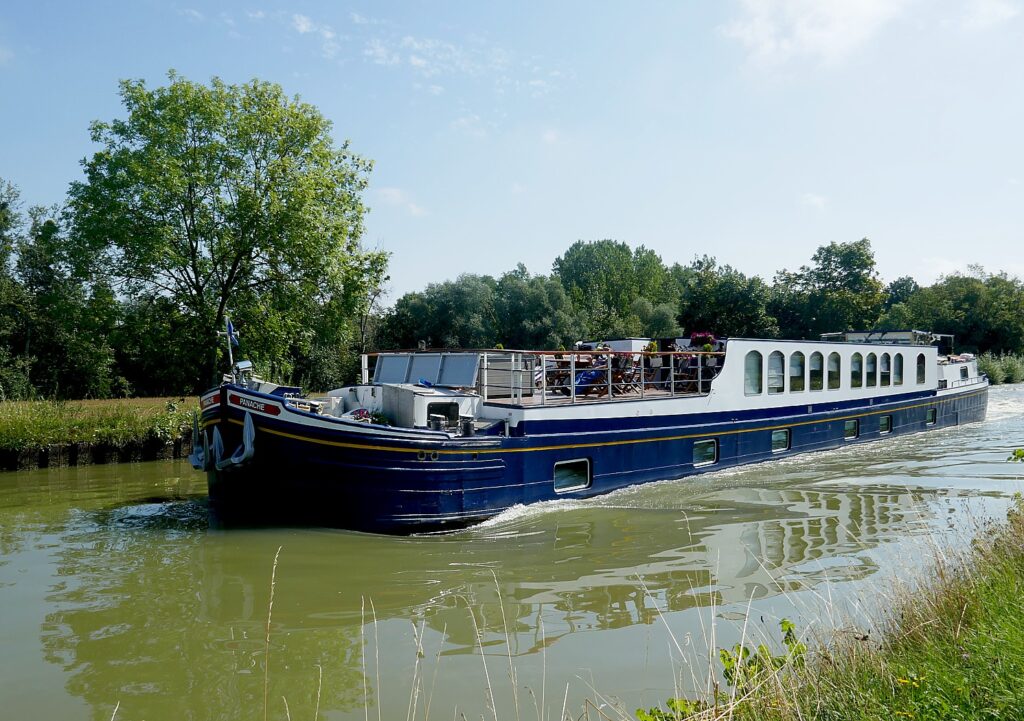
Over the course of our cruise, we have guided tours of charming, colorful, historic cities including Strasbourg, Saverne and Sarrebourg, visit the Rene Lalique crystal museum, see Marc Chagall’s largest and grandest stained glass work, go through a boat “guillotine” and ascend a remarkable boat elevator, have a private tasting at what can only be described as a renegade/maverick winery on the Route des Vins d’Alsace, and so many more surprises that delight.
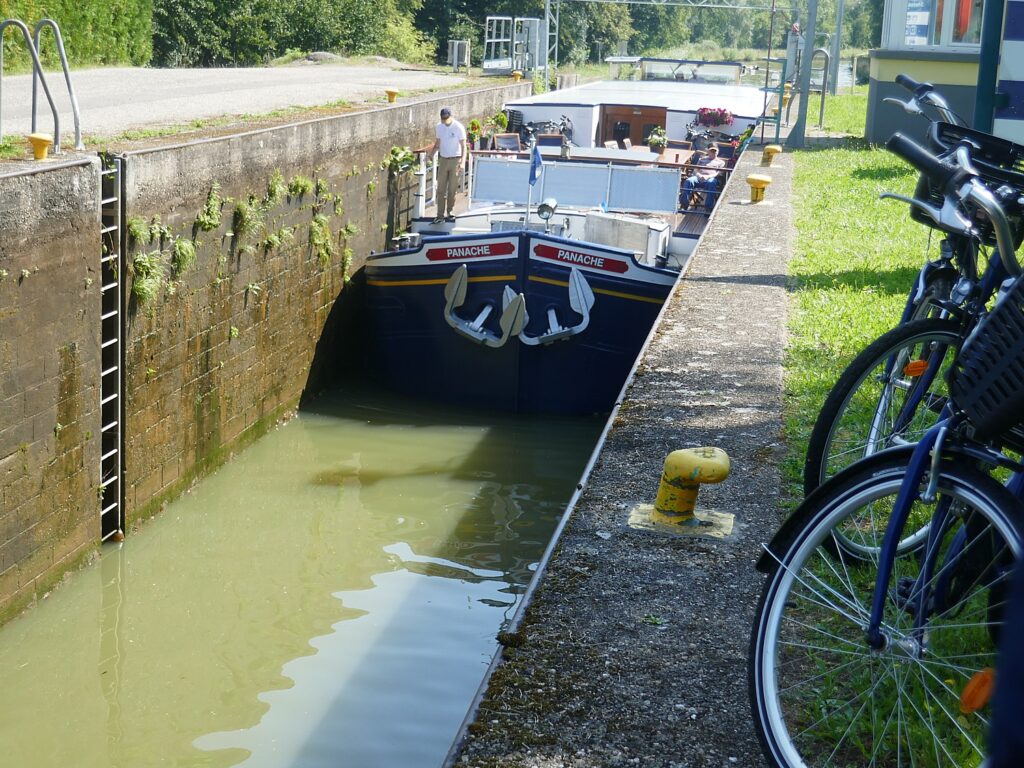
The slow pace of the barge proves an advantage because I also get to bike along the towpath the entire length of the route, return to the boat, and see the scenery again from a different perspective of the elevated perch of the boat deck.
The pace is so relaxed, and to be candid, the level of luxury and pampering so great, you don’t even realize how much you have done in a– whether it’s biking the route, sightseeing and visiting villages, historic and cultural places, enjoying fine wine and cuisine, and still have time to just hang out and watch the landscape go by and enjoy the company of fellow travelers.
We do so much in a day, it is mind-boggling to realize (well after the trip), what short distances we actually travel each day (several of the excursions involve us being picked up by van where the boat docks), and where we were the day before and will be the day after. Time and distance just kind of melt.
I have cleverly arranged to arrive two days early in Strasbourg, where the Alsace-Lorraine cruise starts – this takes into account any unexpected flight or travel delays, and gives me two half days and one full day in this picturesque old city (we actually will be visiting here with the cruise on our first full day).
Captain Brian picks us up at the Regent Petit France Hotel, which sits astride the canal with the most picturesque view of the historic district, and chauffeurs us to where the hotel barge is tied up at Krafft, where we are greeted by the crew of six with Premier Cru FrereJohn Freres Champagne and hors d’oeurves, and introduces to the boat, the crew and our fellow traveling companions for the week.
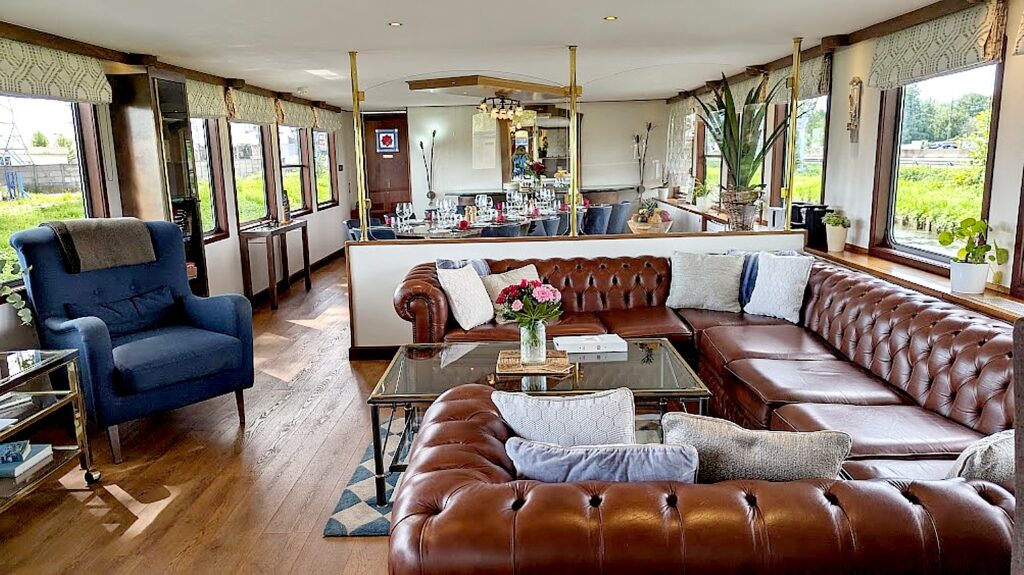
The salon/dining room is absolutely stunning, with comfortable sofas and chairs, a long dining table, large picture windows that let the light and scenery in.
Panache is a hotel barge that has been fitted out in traditional yacht style with brass and mahogany fittings and polished hardwood floors in the spacious public areas and very comfortable cabin accommodation. The salon/dining room is absolutely stunning, with comfortable sofas and chairs, a long dining table, large picture windows that let the natural light and scenery in. The separated dining area is roomy, providing a congenial setting for up to 12 to enjoy the gourmet meals and fine wines served on board at the grand table. Here we also have access to free Wifi,

Panache accommodates 12 passengers in six spacious cabins (larger than the room at the delightful Hotel Hannong I had just left in Strasbourg), that can be configured for twin or double-bed, with plush linens, plenty of lights and electric plug-ins, our own temperature control, room to store our clothes, and private bathroom (double sinks! oversized shower!). Housekeeping comes in twice a day and leaves a chocolate on the pillow at night. Truly a boutique hotel room that floats us from destination to destination in absolute luxury.
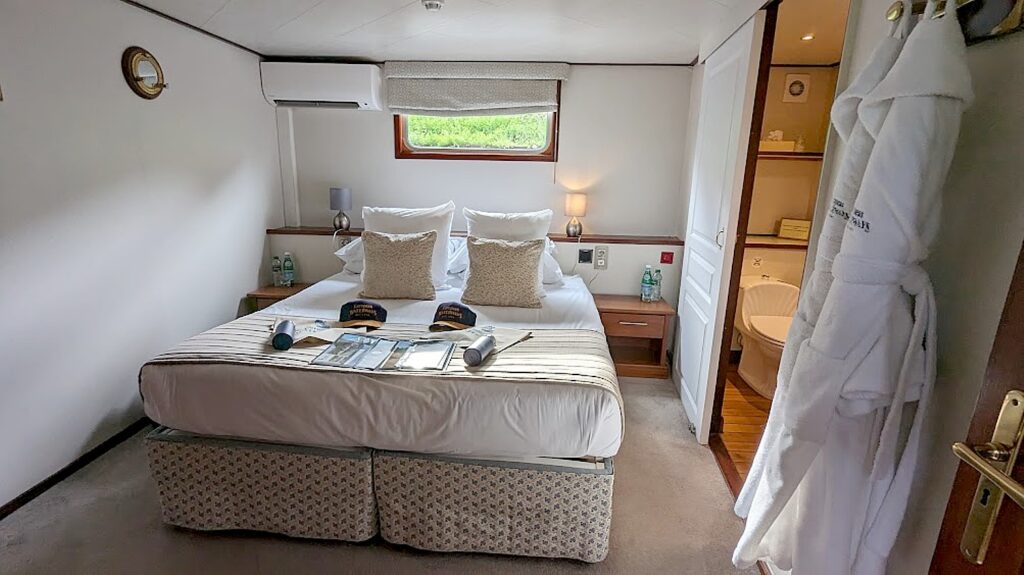
Panache has a very comfortable sun deck with lounging chairs and table and chairs, from which you can enjoy the scenery, have cocktails and dine alfresco, and heated spa pool. There also is a plentiful number of bicycles which I take advantage of each day, virtually biking the entire route (and then getting back on board to enjoy it from the perch of the boat).
Each evening, Captain Brian (who is also the general manager, the cruise director, our tour guide and sometimes the pilot and just 25 years old) orients us to the boat and our cruise, especially the invitation that the crew “never lets a glass go empty, so if you don’t want a refill of wine, put your hand over it” (and they are only half kidding, as we discover). Each evening, he orients us to what we will do the next day – whether to visit a museum or a guided walking tour – and each day is distinguished by a special highlight.

You expect picturesque scenery and to visit fascinating cultural attractions but what is totally unexpected is the astonishing quality of the cuisine that we are treated to by Chef Leo – a young chef who, we learn, was a contestant on France’s “Top Chef”. Over the course of our six days of cruising, we experience Michelin-star quality dining, as Chef Leo enjoys experimenting. As he jokes, each cruise brings him more “guinea pigs”.
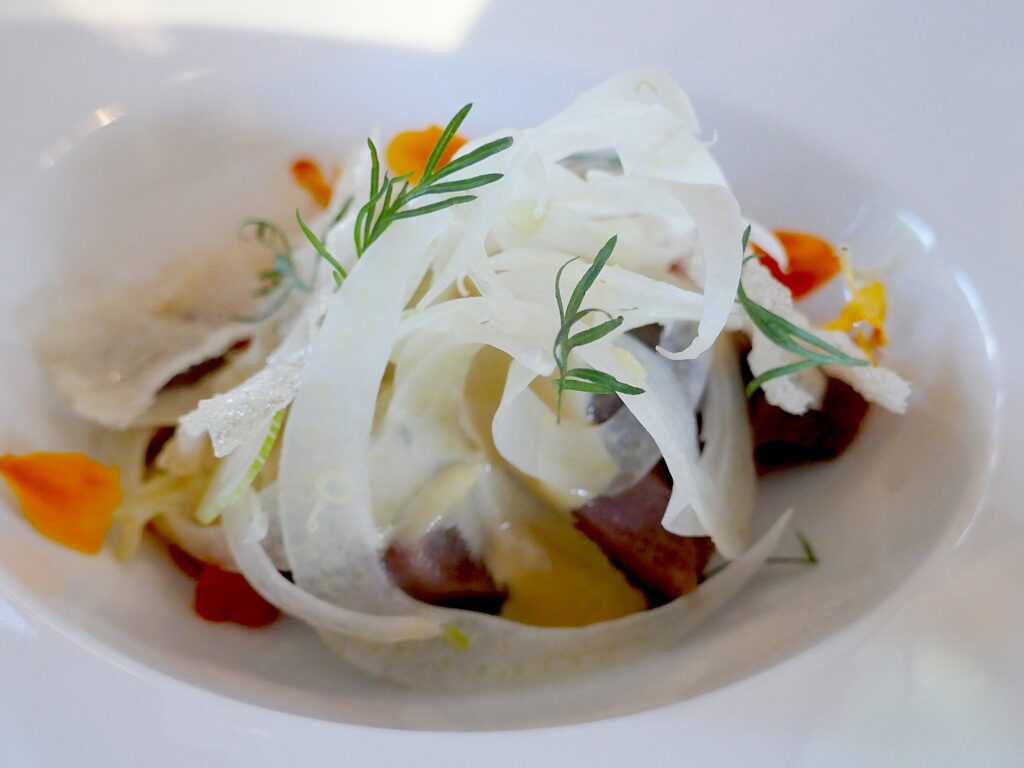
His cooking is really distinctive – it is not any particular cuisine, necessarily. He has a vibrant taste palate, likes a lot of flavor without overwhelming the actual flavor of the main item, and most important, is never too rich. He is really imaginative, creative, and the presentations are stunning. There are three courses for lunch and dinner, so each individual course is not too much, but not too little, either, with a different red and white wine accompanying each, and three different cheeses to finish.

Each meal is an event, an experience. Chef Leo comes out to explain each course, and Emily (from England) or Martyna (from Poland) introduce the wines – where produced, the vintage, the pedigree – and the cheeses (which have fascinating stories). By the end of the cruise, including the tasting at a most distinctive (progressive) winery that Captain Brian has found, we must have tasted more than 36 wines and 36 cheeses from throughout France – each perfectly paired for what is being served to bring out the best flavors.
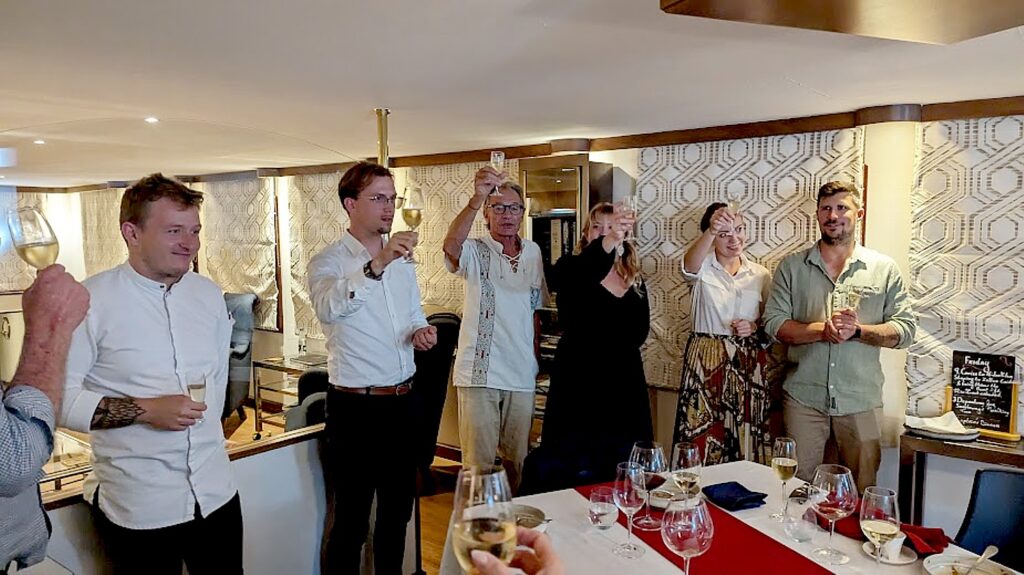
They do their best to school us in the complicated classifications of French wines. We learn about Grand Cru and Premier Cru, which refer to official designations of vineyards and villages in a specific French region where the grapes are grown. Also “terroir” which describes the complete natural environment (ecosystem) in which a particular wine is produced, including factors such as the soil, geography and topography, rootstock and climate that impart the characteristic taste and flavor to the wine. We learn to recognize the region a wine comes from by the bottle – Alsace wines are served in a long, thin bottle, and that France has official appellations that wines and cheeses can use – so Champagne must be from Champagne, Bordeaux from Bordeaux. I may not have become a wine expert, but all the wines we enjoy are of superior quality and significantly, are paired so perfectly with the food.
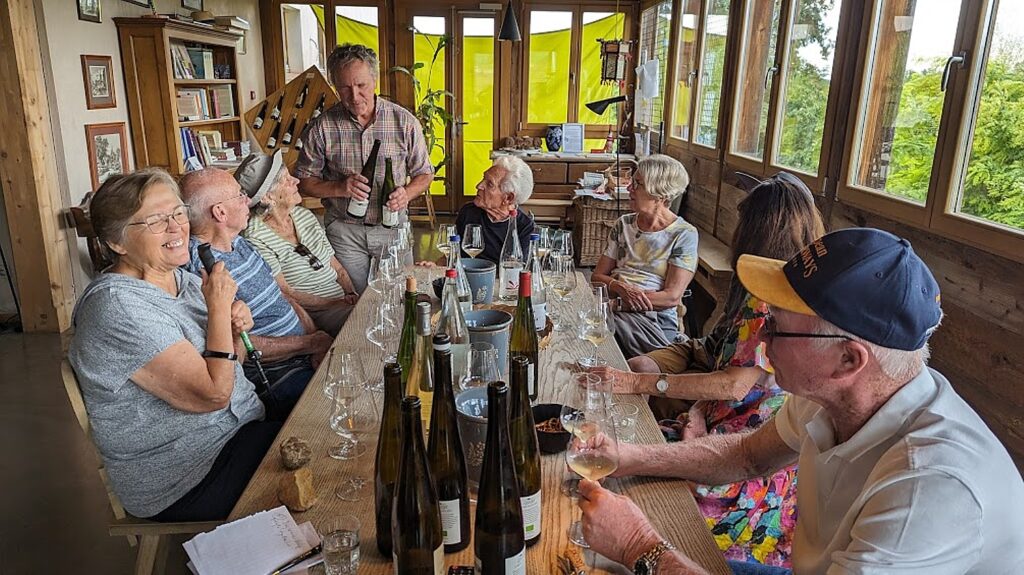
When we arrive back from an afternoon tour, we are welcomed aboard with some sort of cocktail –one day it is Mimosa, another it is French 75 (an elderberry gin spritzer).
We are small enough group that our wishes are usually accommodated – Hylton, who comes from Australia, expresses a desire for steak and Sue, his wife, wishes for passionfruit crème brulee – and don’t you know, we have both for lunch – with Leo doing a cooking demonstration in the morning as we cruise to show how he creates the crème brulee. It is a first for him creating crème brulee with passionfruit and he takes it as a sort of challenge. We watch him create it, with his precise weighing and measuring, and, later, just before serving, firing it up with a torch.
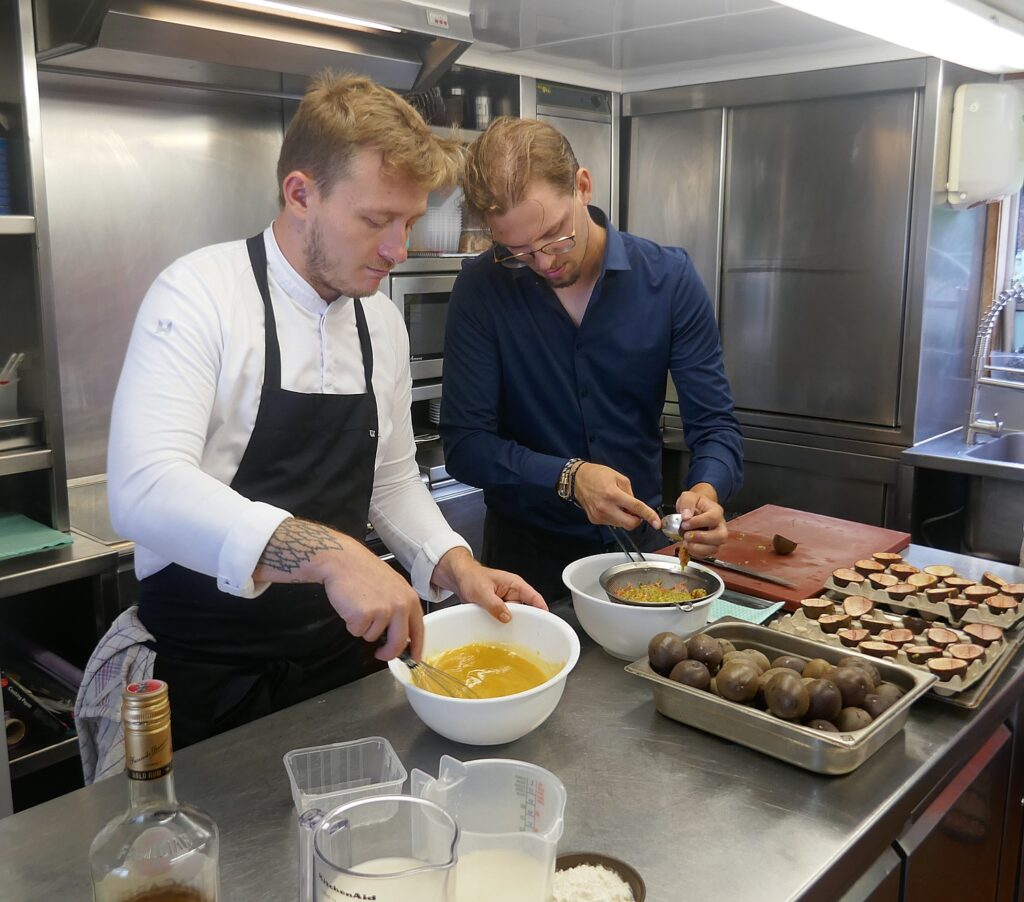
In fact, the one evening we dine in a pleasant village restaurant, the meal, although very good, does not compare with Chef Leo’s creations. Clearly, we have been spoiled in just these few days.
Captain Brian gives us the safety talk – noting that some of the bridges we go under are so low, we will have to sit down and the bridge has to be taken down; the canals are so narrow, with barely an inch on either side, we need to keep hands inside the boat. And don’t block the navigator’s view of the crossbars at the front of the boat. There are life jackets, an emergency red call button in our cabins (don’t use it to call for a sandwich, it will wake everyone). And another thing, Captain Brian insists: never say the name of the animal with the bushy tail and big ears and eats carrots on a boat – it’s bad luck.
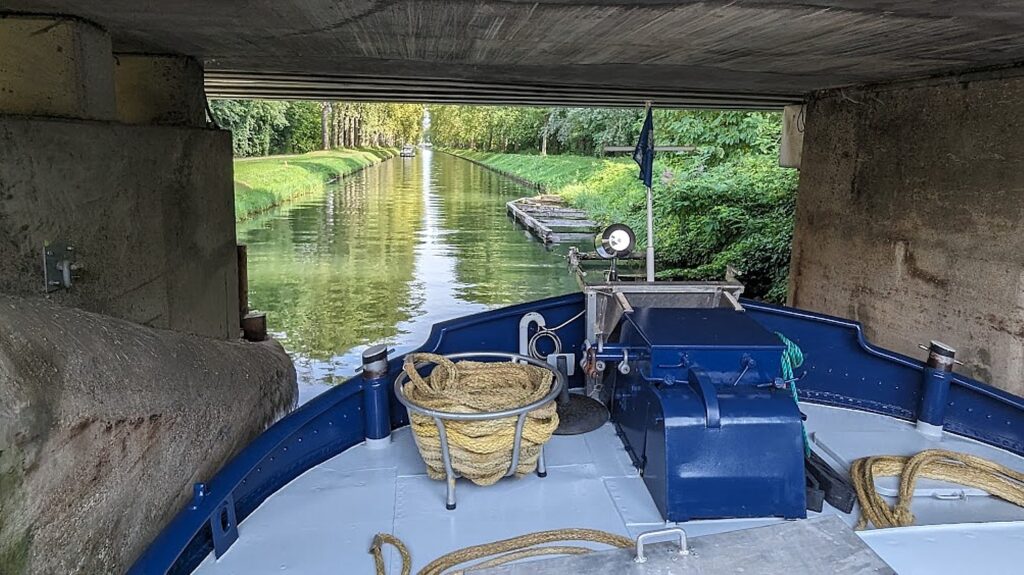
For such a small contingent, we bring an interesting variety as well as commonality. One couple is from Australia where they have an 8000-hectare farm (8 km across); another couple is from Australia as well, where he was a wine salesman and since retiring, teaches water aerobics (I have to mention he is 95 and has the body of a fit man half his age); another couple is from Minnesota who also have a farm; another couple comes from Georgia where he is a lawyer and she was a county commissioner. (All of us happen to be senior citizens but young couples, families and solo travelers would enjoy the cruise, and it is possible to charter.)
This first evening, Chef Leo’s talents become apparent: a carrot and orange salad to start with a kind of pesto sauce that surprises with flavor; roasted seabass with leek and champagne sauce, and dessert of peach tart. This evening the wines include Famille Hugel, an Alsace Pinot Blanc, 2019, and an Alsace red, Boitt Geyl Pinot Noir, 2017 (producing wines since 1775!), that pair superbly with the flavors.
The meal finishes with three cheeses: Camembert, “King of Cheeses,” from Normandy, with a golden color and buttery texture and a strong aroma (“We serve it on the first night to get it out of the refrigerator”); Morbier, a cow cheese from Franche-Comte, which traces back to the 1800s and, legend has it, a method of disguising the size of the cheese within charcoal in order to avoid paying tax; and Selles-sur-Cher, a goat cheese from the Loire Valley which, we learn is a cheese deprived of light and oxygen for 38 weeks, and is served in an edible rind.
Notably, Chef Leo doesn’t necessarily pre-arrange his menus in advance because he purchases his items fresh, bursting with flavor.
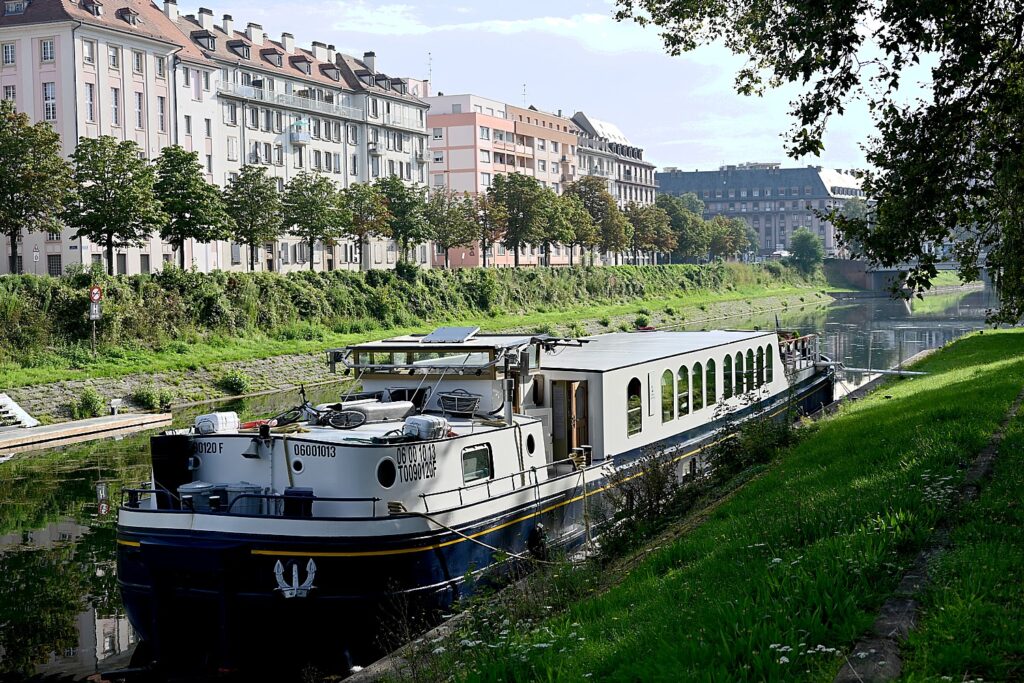
Hotel barging offers an immersive and all-inclusive “gentle voyage of discovery” of the culture, history, fine wine, and gourmet cuisine of the destinations. You cruise right into villages, step off the boat, and can wander into neighborhoods and countrysides, where people live.
European Waterways, which celebrates the 50th anniversary of its founding by Derek Banks and John Wood-Dow this year, was one of the early pioneers of hotel barging on France’s canals. They helped ignite a new niche the travel industry and cruising that proved instrumental in the revitalization of Europe’s intricate network of scenic canals and inland waterways as tourism destinations. Like our Erie Canal of New York State, these canals were no longer being used for commercial shipping; tourism and recreational boating has revitalized them, and the villages along the route.
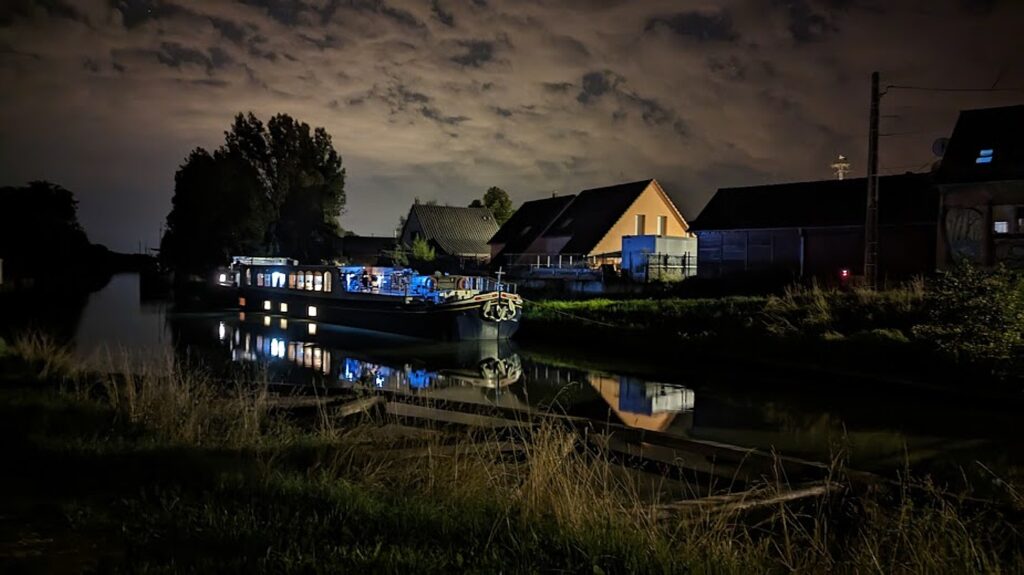
This fascinating network of smaller canals allows for flexibility, spontaneity and ample opportunity to hop off and explore the beautiful surroundings by bicycle or on foot. The itineraries are built around daily, chauffeured excursions “off the beaten path” to wine tastings and visits to stately homes, historic and cultural treasures.
Panache cruises in Holland in the spring when the flowers are in full bloom, and in Champagne in May & June (Champagne itineraries typically include Brie cheese tastings, a tour of the Cathedral at Reims, Epernay and tastings at renowned champagne houses). In summer and autumn, Panache cruises the Alsace & Lorraine.
European Waterways launched its first Christmas Markets Cruises aboard Panache in 2023 in the Alsace & Lorraine region of France. This 6-night/7-day luxury barge cruise visits the Christmas Markets of Strasbourg, Colmar, and Haugenau, a chocolate museum, a glass bauble factory which is said to be the home of the traditional tree decoration (For more information, visit https://www.europeanwaterways.com/themed/christmas-market-cruises/)
With a fleet of 18 (with the recent launch of its ultra deluxe vessel, Kir Royale), that span nine countries, European Waterways is one of the largest luxury hotel barging companies in Europe.
European Waterways, 1-877-879-8808, www.europeanwaterways.com.
Next: The Panache Visits Strasbourg
_______________________
© 2024 Travel Features Syndicate, a division of Workstyles, Inc. All rights reserved. Visit goingplacesfarandnear.com and travelwritersmagazine.com/TravelFeaturesSyndicate/. Blogging at goingplacesnearandfar.wordpress.com and moralcompasstravel.info. Visit instagram.com/going_places_far_and_near and instagram.com/bigbackpacktraveler/ Send comments or questions to FamTravLtr@aol.com. Tweet @TravelFeatures. ‘Like’ us at facebook.com/NewsPhotoFeatures
